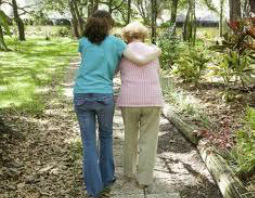
The important take-home message is that doing any physical activity, even at a low intensity, is good for you.
Older people may be particularly susceptible to poor blood sugar control after meals due to insulin resistance in the muscles and slow or low insulin secretion from the pancreas, the researchers said. They found the best time to walk was after the evening meal, which is often the largest of the day and therefore causes the greatest rise in blood sugar.
 www.open.edu
www.open.edu Lately, I've felt cold after the evening meal, especially in the legs. I sit at my computer for an hour before retiring to the living room with my husband. Even though it's supposed to be summer, the temperatures are low. He's nice and warm, having cooked the meal and washed the dishes. I'm so cold I spread a blanket over my legs. Before you scoff that I'm lazy—I have a walking disability. An accident during a hip replacement shattered my femur, resulting in the bone being pinned and screwed onto a shaft. That should have worked, but it didn't. My leg is crooked and my walking is slow and painful. A rollator solves the problem outside.
It's pretty funny when other walkers pass me by on my afternoon stroll. I'm like the tortoise plodding on as the hare bounds past on wings of youth.
Dah! I see it now. Perfectly logical. I needed exercise.
Now I have a dilemma. My schedule will need to change. I've always loved routine—more so since I've passed the 70 year threshold. Mind and body respond well when I anticipate what is to come.
Nothing for it, I must alter that habit and walk for my life. Apparently, three 15 minute walks are better than one 45 minute workout.
Do you know someone who could benefit from this advice?

 RSS Feed
RSS Feed






